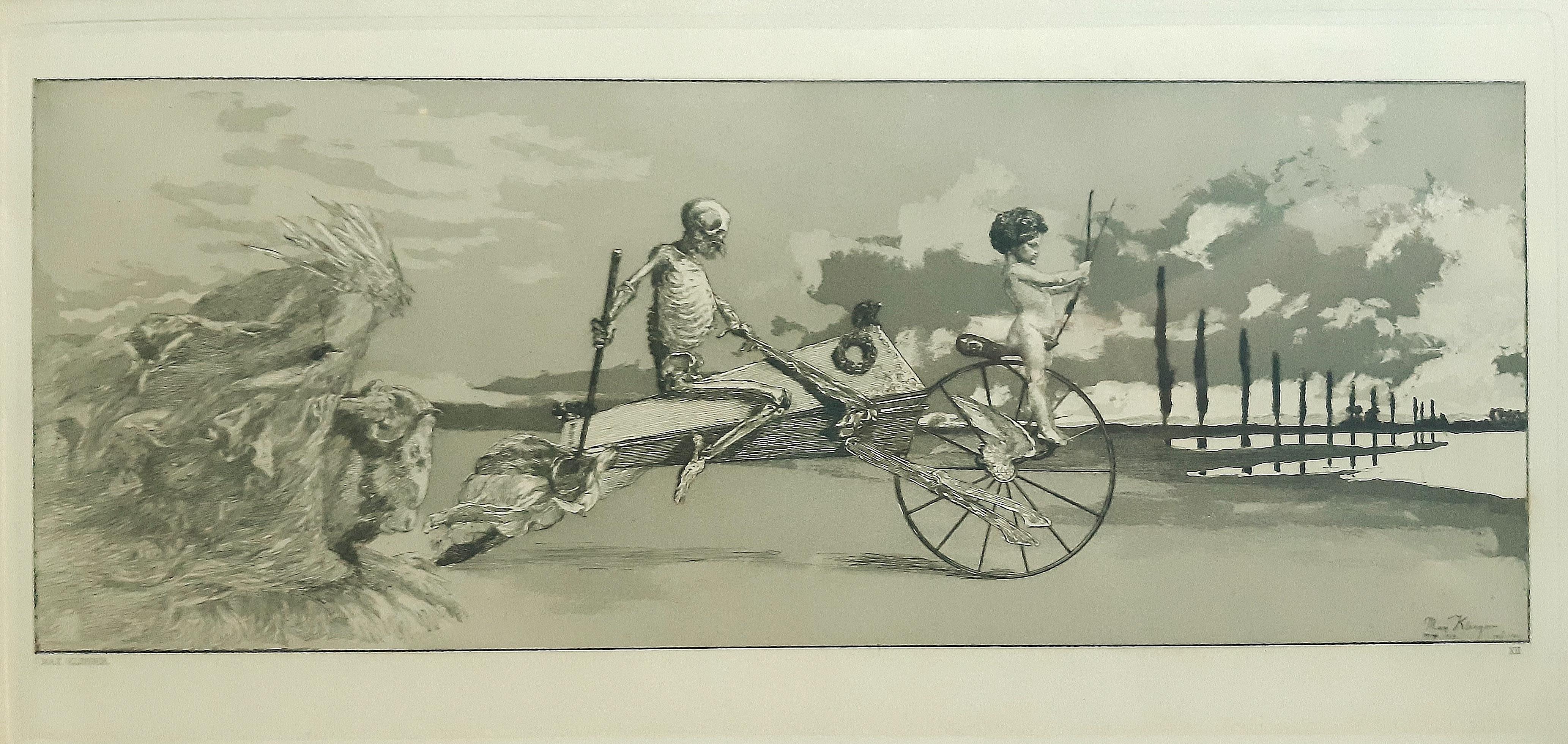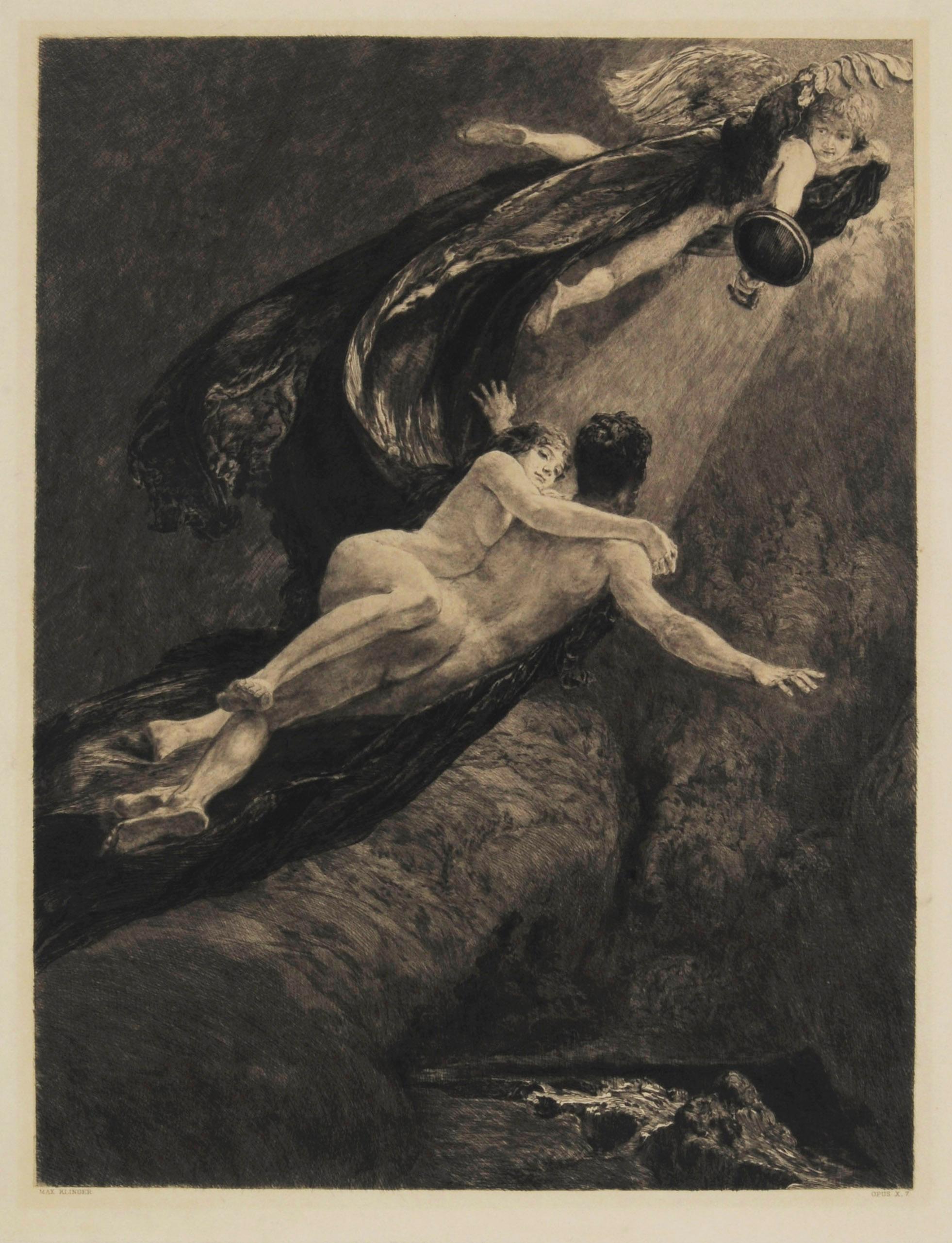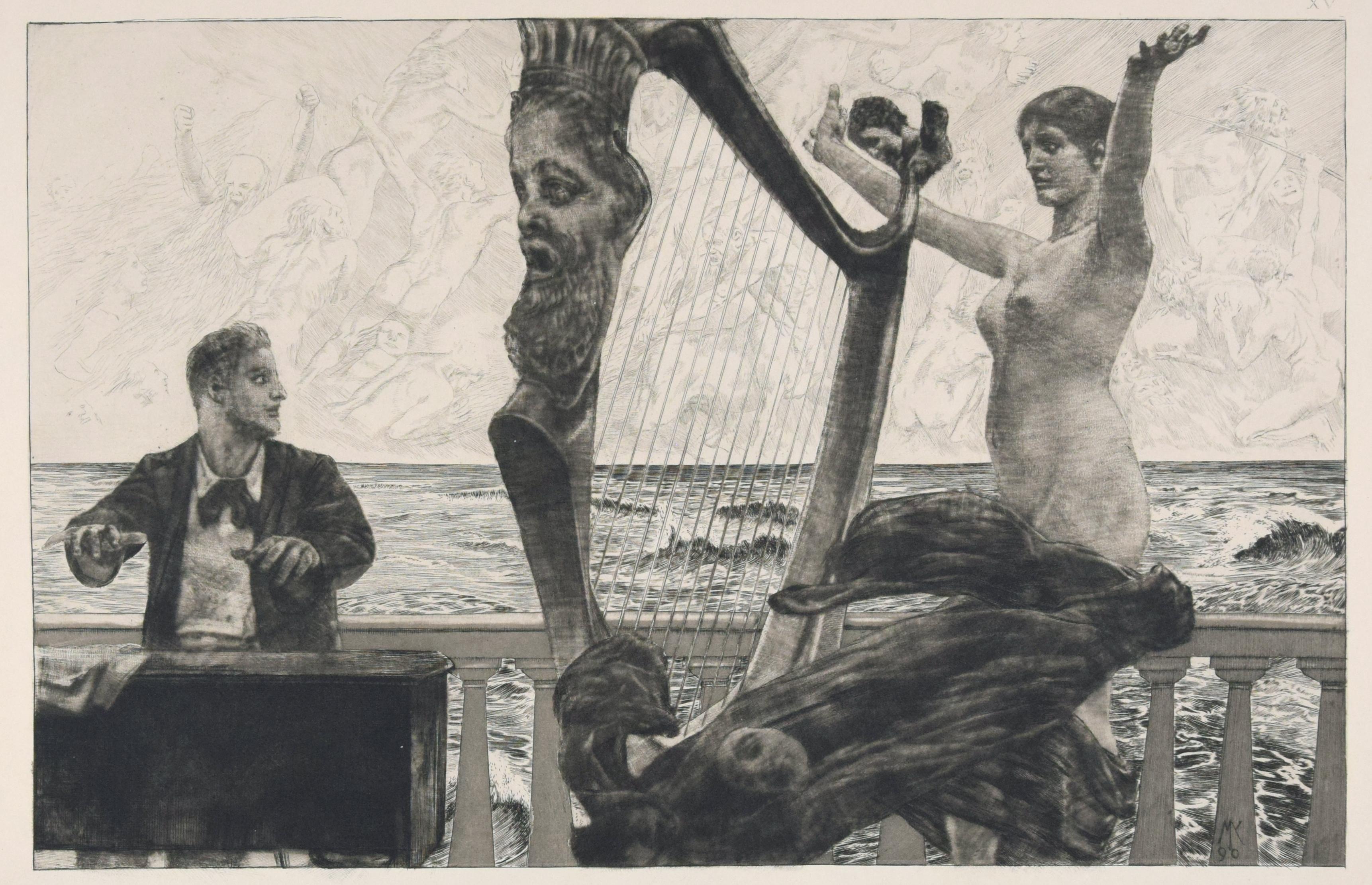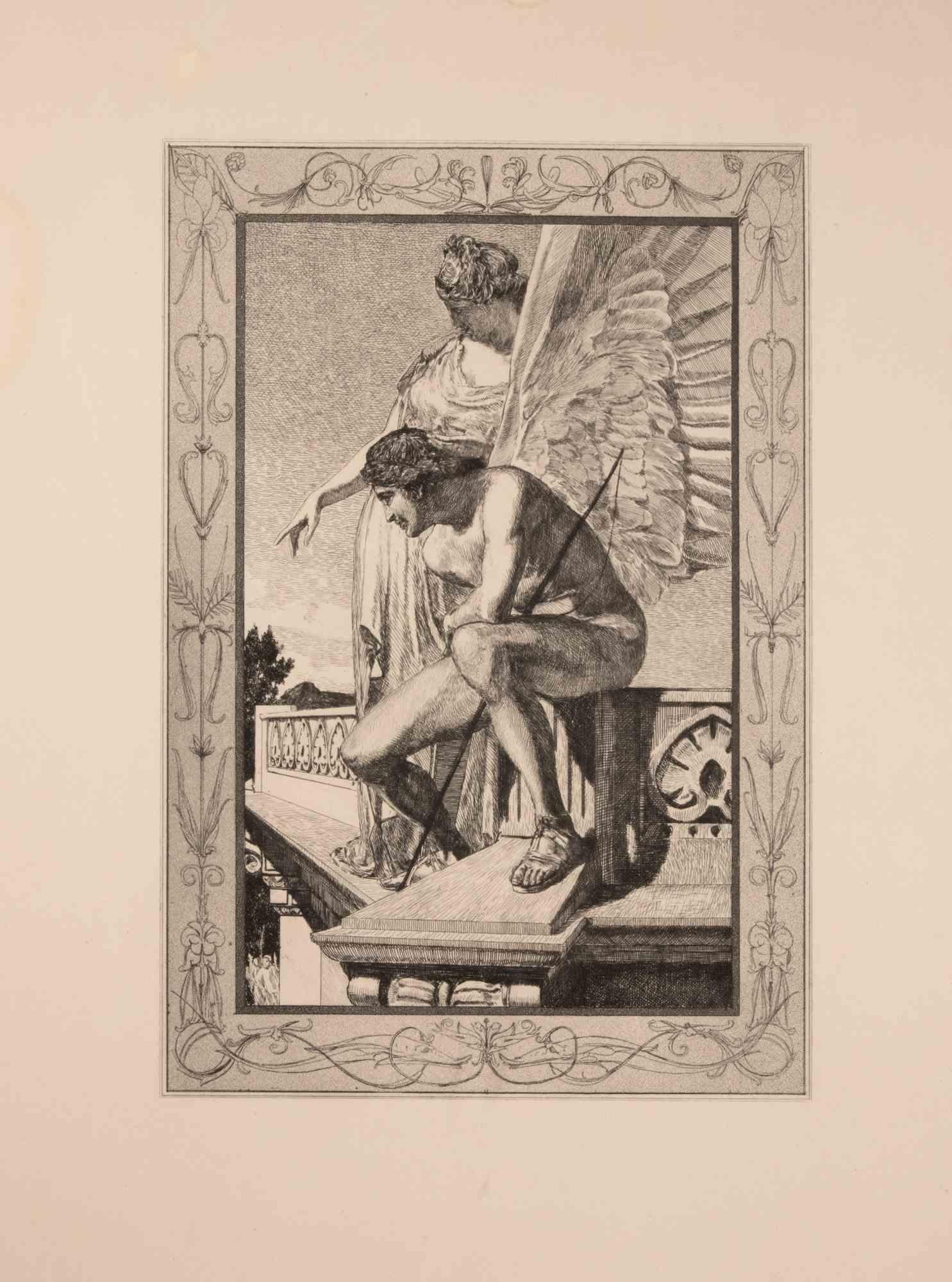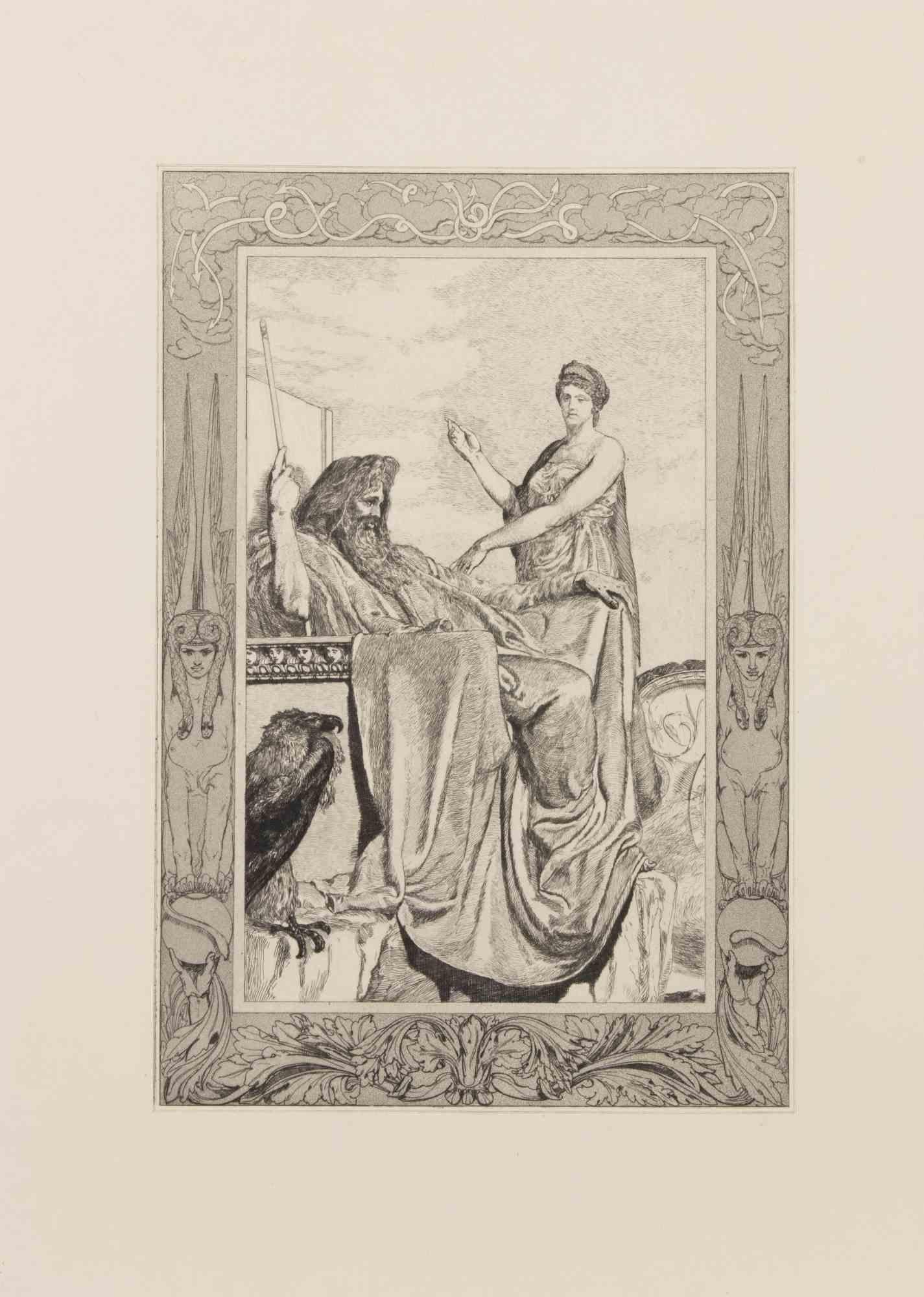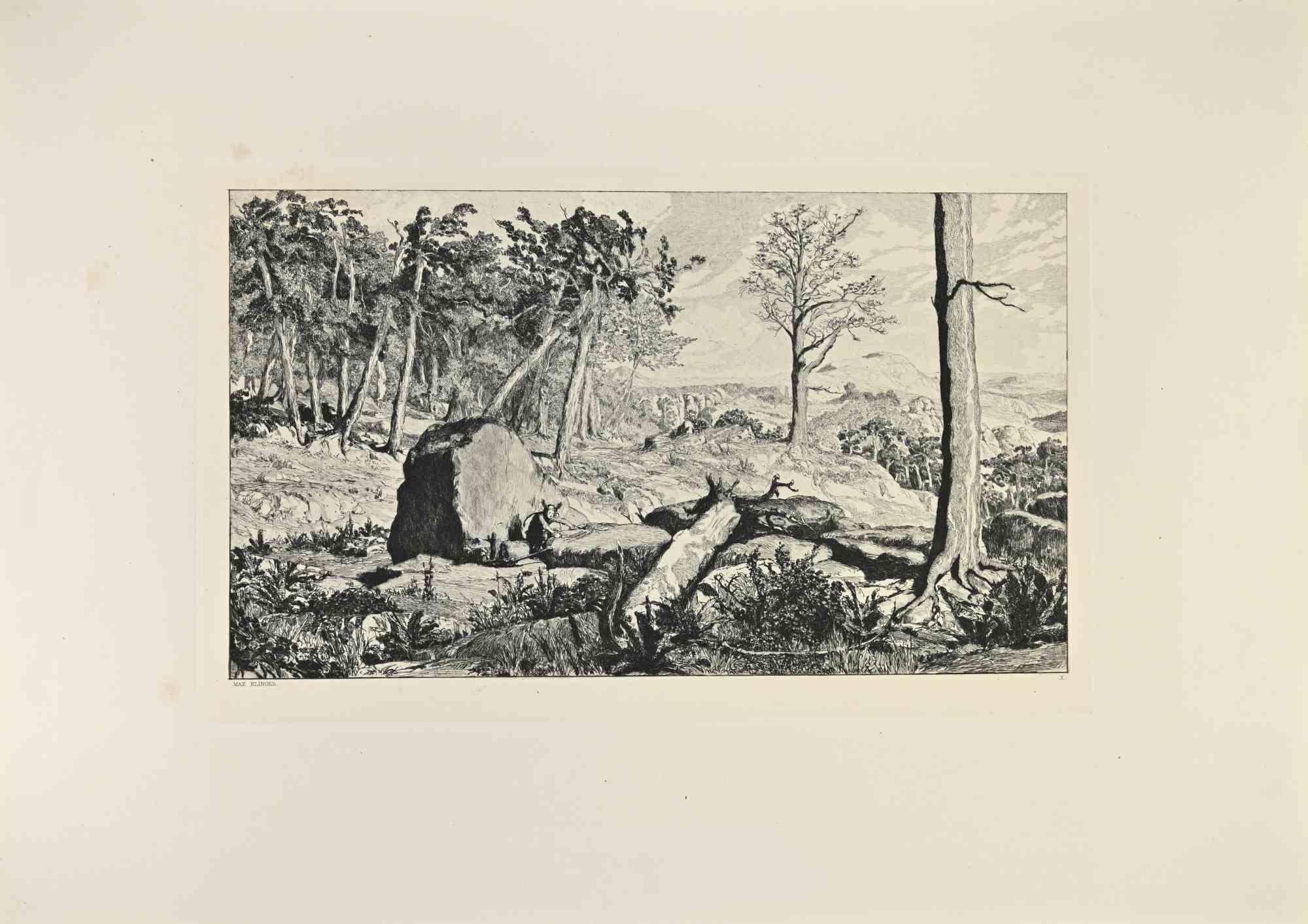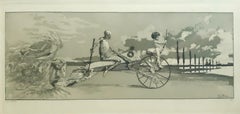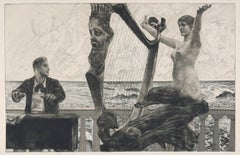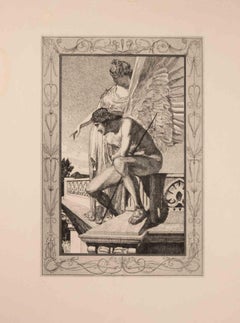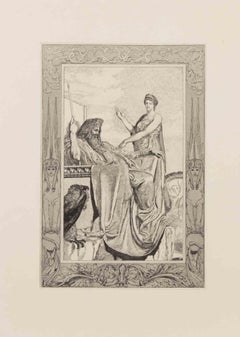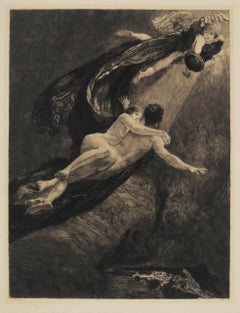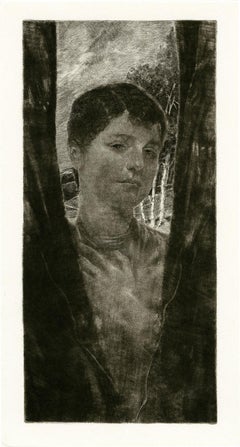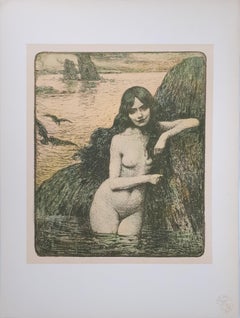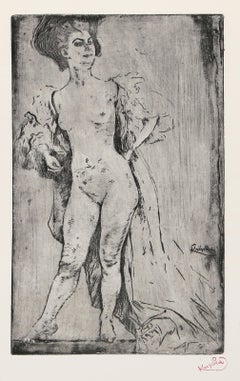Items Similar to Venus in Muschelwagen - Etching by E. Einschlag after M. Klinger - 1907
Want more images or videos?
Request additional images or videos from the seller
1 of 3
Max KlingerVenus in Muschelwagen - Etching by E. Einschlag after M. Klinger - 19071907
1907
$2,948.20
$4,211.7130% Off
£2,182.71
£3,118.1530% Off
€2,450
€3,50030% Off
CA$4,081.99
CA$5,831.4130% Off
A$4,456.55
A$6,366.5130% Off
CHF 2,336.39
CHF 3,337.7030% Off
MX$54,126.57
MX$77,323.6730% Off
NOK 29,177.70
NOK 41,682.4230% Off
SEK 27,551.53
SEK 39,359.3230% Off
DKK 18,652.37
DKK 26,646.2530% Off
About the Item
Venus in Muschelwagen is a superb black and white etching on paper, realized in 1907 by the German artist Eduard Einschlag (Leipzig 1879 -1945), after Max Klinger (Leipzig 1857 - Grossjena 1920).
Inscriptions on plate on lower margin under the image: "Max Klinger pinxit. / O. Felsing Berlin Imprt./ E. Einschlag sculpt.". Title on lower margin at the center.
This wonderful modern original print representing a mythological scene, is taken from a Max Klinger's fresco in Villa Albers (Nationalgalerie Berlin). This etching is realized by Edouard Einschlag, a German member of the Leipzig Secession, of the Deutscher Künstlerbund and co-founder of the Leipzig Annual Exhibition, for which he organized many exhibitions. He died murdered in the Trebklinka concentration camp.
In excellent condition, the work is applied to the verso with a modern passe-partout adhesive tape, cm 55 x 110.
- Creator:Max Klinger (1857 - 1920)
- Creation Year:1907
- Dimensions:Height: 19.1 in (48.5 cm)Width: 4.14 in (10.5 cm)Depth: 0.08 in (2 mm)
- Medium:
- Movement & Style:
- Period:
- Framing:Framing Options Available
- Condition:Insurance may be requested by customers as additional service, contact us for more information.
- Gallery Location:Roma, IT
- Reference Number:Seller: M-1016391stDibs: LU65037018802
About the Seller
4.9
Platinum Seller
Premium sellers with a 4.7+ rating and 24-hour response times
1stDibs seller since 2017
7,710 sales on 1stDibs
Typical response time: 2 hours
- ShippingRetrieving quote...Shipping from: Roma, Italy
- Return Policy
Authenticity Guarantee
In the unlikely event there’s an issue with an item’s authenticity, contact us within 1 year for a full refund. DetailsMoney-Back Guarantee
If your item is not as described, is damaged in transit, or does not arrive, contact us within 7 days for a full refund. Details24-Hour Cancellation
You have a 24-hour grace period in which to reconsider your purchase, with no questions asked.Vetted Professional Sellers
Our world-class sellers must adhere to strict standards for service and quality, maintaining the integrity of our listings.Price-Match Guarantee
If you find that a seller listed the same item for a lower price elsewhere, we’ll match it.Trusted Global Delivery
Our best-in-class carrier network provides specialized shipping options worldwide, including custom delivery.More From This Seller
View AllAmor, Tod und Jenseits - Etching by M. Klinger - 1881
By Max Klinger
Located in Roma, IT
Amor, Tod und Jenseits, (Cupid, death and afterlife) is an original etching and aquatint on paper Chine collé, realized by Max Klinger in 1881, plate XII from “Intermezzi” Opus IV,...
Category
1880s Symbolist Figurative Prints
Materials
Etching, Aquatint
$1,347 Sale Price
30% Off
Brahms-Phantasie - Rare Portfolio of 41 Engravings by Max Klinger - 1894
By Max Klinger
Located in Roma, IT
Brahms-Phantasie is a wonderful in-folio volume: the Brahm's Phantasies musical score is incredibly illustrated with 37 numbered plates for a total of 41 original engravings (burin, ...
Category
1890s Symbolist More Prints
Materials
Paper, Engraving
Venus zeigt Amor Psyche - Etching by Max Klinger - 1880
By Max Klinger
Located in Roma, IT
Etching and aquatint realized in 1880, belonging to the Series "Amor und Psyche", Opus V.
Ref. Singer 67, IV.
Excellent condition.
Category
1880s Symbolist Figurative Prints
Materials
Etching
Jupiter and Venus - Etching by Max Klinger - 1909
By Max Klinger
Located in Roma, IT
Etching and aquatint realized in 1909.
Belongs to the series "Amor und Psyche. Opus V".
Very good condition.
Category
1880s Symbolist Figurative Prints
Materials
Etching
Opus IV, Simplicius in der Waldeinode - Etching by Max Klinger - 1881
By Max Klinger
Located in Roma, IT
Opus IV, Simplicius in der Waldeinode (Simplicius in the Wilderness) belongs to a series of prints called Intermezzi realized by Max Klinger, published by Nurnberg: Stroefer, 1881.
...
Category
1880s Symbolist Figurative Prints
Materials
Etching
Opus IV, Simplicius in der Waldeinode - Etching by Max Klinger - 1881
By Max Klinger
Located in Roma, IT
Opus IV, Simplicius in der Waldeinode (Simplicius in the Wilderness) belongs to a series of prints called Intermezzi realized by Max Klinger, published by Nurnberg: Stroefer, 1881.
...
Category
1880s Symbolist Figurative Prints
Materials
Etching
$1,010 Sale Price
30% Off
You May Also Like
Neue Träume von Glück (New Dreams of Happiness)
By Max Klinger
Located in Fairlawn, OH
Neue Träume von Glück (New Dreams of Happiness)
Etching on heavy laid paper without watermark, 1887
Unsigned, as usual
From: Eine Liebe (Opus X) [A Love (Opus X)], Plate No. 7
fourth...
Category
1880s Expressionist Nude Prints
Materials
Etching
'Erinnerung (Remembrance)' — Turn-of-the Century Romanticism
By Max Klinger
Located in Myrtle Beach, SC
Max Klinger, 'Erinnerung' (Remembrance), original etching with aquatint, 1896. A fine, richly inked impression on off-white, wove paper, with full margins (1 3/4 to 3 1/8 inches), in...
Category
1890s Post-Impressionist Figurative Prints
Materials
Etching, Aquatint
Mermaid - Original Lithograph - 1897
By Charles François Prosper Guérin
Located in Paris, IDF
Charles GUERIN
Mermaid, 1898
Original lithograph (Champenois workshop)
Printed signature in the plate
On vellum, 40 x 31 cm (c. 16 x 12 in)
INFORMATION: Lithograph created for the ...
Category
1890s Art Nouveau Nude Prints
Materials
Lithograph
Femme Debout II, Surrealist Etching by Frantisek Kupka
By Frantisek Kupka
Located in Long Island City, NY
Frantisek Kupka, Czech (1871 -1957) - Femme Debout II, Year: circa 1912, Medium: Etching on Pur Fil du Marais, stamp signed, Image Size: 15.75 x 9.75 inches, Size: 25.75 x 19.5 i...
Category
1910s Surrealist Nude Prints
Materials
Etching
Landslide (Bergsturz), Pre-20th Century Etching by Max Klinger
By Max Klinger
Located in Long Island City, NY
Max Klinger's Intermezzi (Intermezzos) offers a diverse selection of amusements, like brief comedic interludes at the opera. The portfolio highlights the capriciousness of life and i...
Category
1880s Old Masters Landscape Prints
Materials
Etching
"Looking at Infinity" Copper Plate Heliogravure
By Ferdinand Hodler & R. Piper & Co.
Located in Chicago, IL
2018 marks the centenary anniversary of Ferdinand Hodler’s death. In that 100 years time, the art world’s esteem of this important artist has proved fickle. It has shifted from extolling his artistic merits during his lifetime to showing something of a feigned disdain- more reflective of the world political order than a true change of heart for Hodler’s work. After years of Hodler being all but a footnote in the annals of art history and generally ignored, finally, the pendulum has righted itself once again. Recent retrospective exhibitions in Europe and the United States have indicated not only a joyful rediscovery of Hodler’s art but a firm conviction that his work and world view hold particular relevance today. DAS WERK FERDINAND HODLERS is not only a collection of printed work reflecting the best of all of his painted work created up to 1914 just before the outbreak of World War I, the portfolio itself is an encapsulation of Hodler’s ethos, Parallelisme.
Hodler developed his philosophy of Parallelisme as a unifying approach to art which strips away detail in search of harmony. By means of abstraction, symmetry and repetition, Hodler sought ways to depict Nature’s essence and her fundamental, universal order. He believed these universal laws governing the natural, observable world extend to the spiritual realm. Symbolist in nature with Romantic undertones, his works are equally portraits of these universal concepts and feelings governing all life as they are a visual portrait in the formal sense. Whether his subject is a solitary tree, a moment in battle, mortal fear, despair, the awe inspired by a vast mountain range, a tender moment or even the collective conviction in a belief, Hodler unveils this guiding principle of Parallelisme.
Several aspects of Hodler’s portfolio reinforce his tenets of Parallelisme. The Table of Contents clearly preferences a harmonious design over detail. The two columns, consisting of twenty lines each, list the images by order of appearance using their German titles. The abbreviated titles are somewhat cryptic in that they obscure the identities of the sitters. Like the image Hodler presents, they are distillations of the sitter without any extraneous details. This shortening was also done in an effort to maintain a harmonious symmetry of the Table of Contents, themselves, and keep titles to a one-line limit. The twenty-fourth title: “Bildnis des Schweizerischen Gesandten C.” was so long, even with abbreviation, that it required two lines; so, for the sake of maintaining symmetry, the fortieth title: “Bauernmadchen” was omitted from the list. This explains why the images are not numbered. Hodler’s reasoning is not purely esoteric. Symmetry and pattern reach beyond mere formal design principles. Finding sameness and imposing it over disorder goes to the root of Hodler’s identity and his art. A Swiss native, Hodler was bi-lingual and spoke German and French. Each printed image, even number forty, have titles in both of Hodler’s languages. Certainly, there was a market for Hodler’s work among francophones and this inclusion may have been a polite gesture to that end; however, this is the only place in the portfolio which includes French. With German titles at the lower left of each image, Hodler’s name at bottom center and corresponding French titles at the lower right of each image, there is a harmony and symmetry woven into all aspects of the portfolio. This holds true for the page design, as it applies to each printed image and as it describes the Swiss artist himself. Seen in this light, Hodler’s portfolio of printed work is the epitome of Hodler’s Parallelisme. DAS WERK FERDINAND HODLERS is also one of the most significant documents to best tell the story of how Hodler, from Switzerland, became caught between political cross-hairs and how the changing tides of nations directly impacted the artist during his lifetime as well as the accessibility of his art for generations to come.
The Munich-based publisher of the portfolio, R. Piper & Co., Verlag, plays a crucial role in this story. Publishing on a wide range of subjects from philosophy and world religion to music, literature and the visual arts; the publisher’s breadth of inquiry within any one genre was equal in scope. Their marketing strategy to publish multiple works on Hodler offers great insight as to what a hot commodity Hodler was at that time. R.Piper & Co.’s Almanach, which they published in 1914 in commemoration of their first ten years in business, clearly illustrates the rapid succession- strategically calculated for achieving the deepest and broadest impact - in which they released three works on Hodler to hit the market by the close of 1914. DAS WERK FERDINAND HODLERS was their premier publication. It preceded C.A. Loosli’s Die Zeichnungen Ferdinand Hodlers, a print portfolio after 50 drawings by Hodler which was released in Autumn of 1914 at the mid-level price-point of 75-150 Marks; and a third less expensive collection of prints after original works by Hodler, which had not been included in either of the first two portfolios, was released at the end of that year entitled Ferdinand Hodler by Dr. Ewald Bender.
The title and timing of DAS WERK FERDINAND HODLERS' debut leaves little doubt as to the connection it has with another avant-garde portfolio of art prints, Das Werk Gustav Klimts, released in 5 installments from 1908 -1914 by Galerie Miethke in Vienna. Hodler, himself, was involved in Klimt’s ground-breaking project. As the owner of Klimt’s 1901 painting, “Judith with the Head of Holifernes” which appears as the ninth collotype print in the second installment of Das Werk Gustav Klimts, Hodler was obliged to grant access of the painting to the art printers in Vienna for them to create the collotype sometime before 1908. Hodler had been previously invited in 1904 to take part in what would be the last exhibition of the Vienna Secession before Klimt and others associated with Galerie Miethke broke away. In an interview that same year, Hodler indicated that he respected and was impressed by Klimt. Hodler’s esteem for Klimt went beyond the art itself; he emulated Klimt’s method aimed at increasing his market reach and appeal to a wider audience by creating a print portfolio of his painted work. By 1914, Hodler and his publisher had the benefit of hindsight to learn from Klimt’s Das Werk publication.
Responding to the sluggish sales of Klimt’s expensive endeavor, Hodler’s publisher devised the same diversified 1-2-3 strategy for selling Hodler’s Das Werk portfolio as they did with regards to all three works on Hodler they published that year. For their premium tier of DAS WERKS FERDINAND HODLERS, R. Piper & Co. issued an exclusive Museum quality edition of 15 examples on which Hodler signed each page. At a cost of 600 Marks, this was generally on par with Klimt’s asking price of 600 Kronen for his Das Werk portfolio. A middle-tiered Preferred edition of 30, costing somewhat less and with Hodler’s signature only on the Title Page, was also available. The General edition, targeting the largest audience with its much more affordable price of 150 Marks, is distinguishable by its smaller size.
Rather than use the subscription format Miethke had chosen for Klimt’s portfolios which proved to have had its challenges, R. Piper & Co. employed a different strategy. In addition to instantly gratifying the buyer with all 40 of the prints comprising DAS WERK FERDINAND HODLERS and the choice among three price points, they advertised in German journals a fourth possibility of ordering single prints from them directly. These printed images are easily discernible from the three complete folio editions. The paper size of the single purchased images is of the larger format like the Museum and Preferred editions, measuring 65 h x 50 w cm; however, the paper itself is the same copper print paper used in the General edition and then mounted on poster board. The publishing house positioned itself to be a direct retailer of Hodler’s art. They astutely recognized the potential for profitability and the importance, therefore, of having proprietary control over his graphic works.
R. Piper & Co. owned the exclusive printing rights to Hodler’s best work found in their three publications dating from 1914. That same year, a competing publication out of Weimar entitled Ferdinand Hodler: Ein Deutungsversuch von Hans...
Category
1910s Symbolist Figurative Prints
Materials
Paper
More Ways To Browse
Andrew Wyeth Signed
Andy Warhol Dragon
Andy Warhol Golda
Andy Warhol Lifesavers
Antique French Aquatint Print
Antique Navaja
Antoine Borel On Sale
Art Deco Soccer Posters
Bambi Artist
Banksy Applause
Banksy Flags
Banksy Grannies
Banksy Mary
Banksy Monkey Queen
Banksy Stop And Search
Banksy Toxic Mary
Basquiat Boxer Rebellion
Basquiat Flexible
